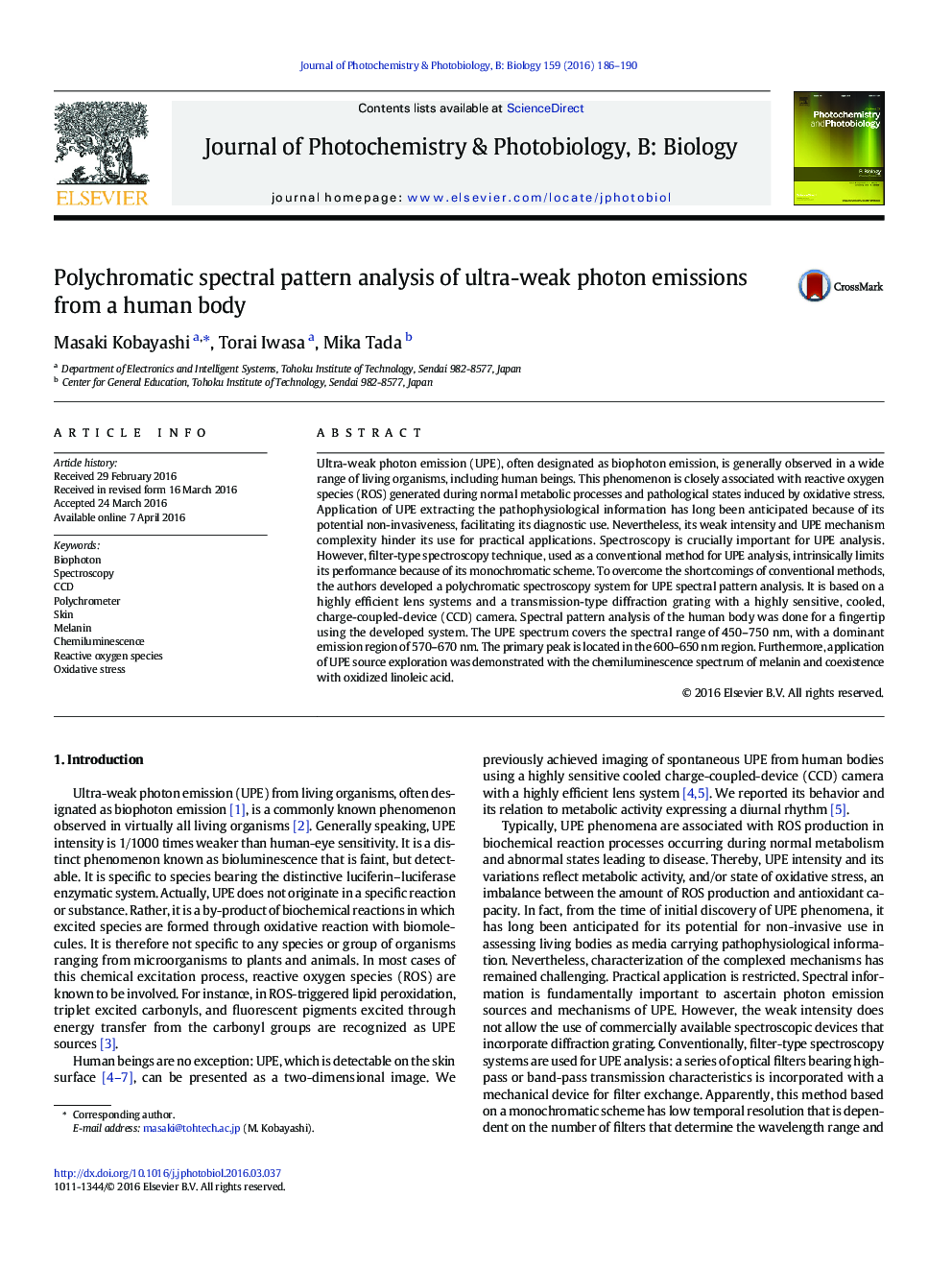| کد مقاله | کد نشریه | سال انتشار | مقاله انگلیسی | نسخه تمام متن |
|---|---|---|---|---|
| 29490 | 44411 | 2016 | 5 صفحه PDF | دانلود رایگان |
• Authors have developed a polychromatic spectroscopy system for spontaneous ultra-weak photon emission (UPE).
• Spectral pattern of human UPE observed on the fingertip was determined.
• For UPE source exploration, the chemiluminescence spectrum of melanin mixed with oxidized linoleic acid was demonstrated.
Ultra-weak photon emission (UPE), often designated as biophoton emission, is generally observed in a wide range of living organisms, including human beings. This phenomenon is closely associated with reactive oxygen species (ROS) generated during normal metabolic processes and pathological states induced by oxidative stress. Application of UPE extracting the pathophysiological information has long been anticipated because of its potential non-invasiveness, facilitating its diagnostic use. Nevertheless, its weak intensity and UPE mechanism complexity hinder its use for practical applications. Spectroscopy is crucially important for UPE analysis. However, filter-type spectroscopy technique, used as a conventional method for UPE analysis, intrinsically limits its performance because of its monochromatic scheme. To overcome the shortcomings of conventional methods, the authors developed a polychromatic spectroscopy system for UPE spectral pattern analysis. It is based on a highly efficient lens systems and a transmission-type diffraction grating with a highly sensitive, cooled, charge-coupled-device (CCD) camera. Spectral pattern analysis of the human body was done for a fingertip using the developed system. The UPE spectrum covers the spectral range of 450–750 nm, with a dominant emission region of 570–670 nm. The primary peak is located in the 600–650 nm region. Furthermore, application of UPE source exploration was demonstrated with the chemiluminescence spectrum of melanin and coexistence with oxidized linoleic acid.
Journal: Journal of Photochemistry and Photobiology B: Biology - Volume 159, June 2016, Pages 186–190
